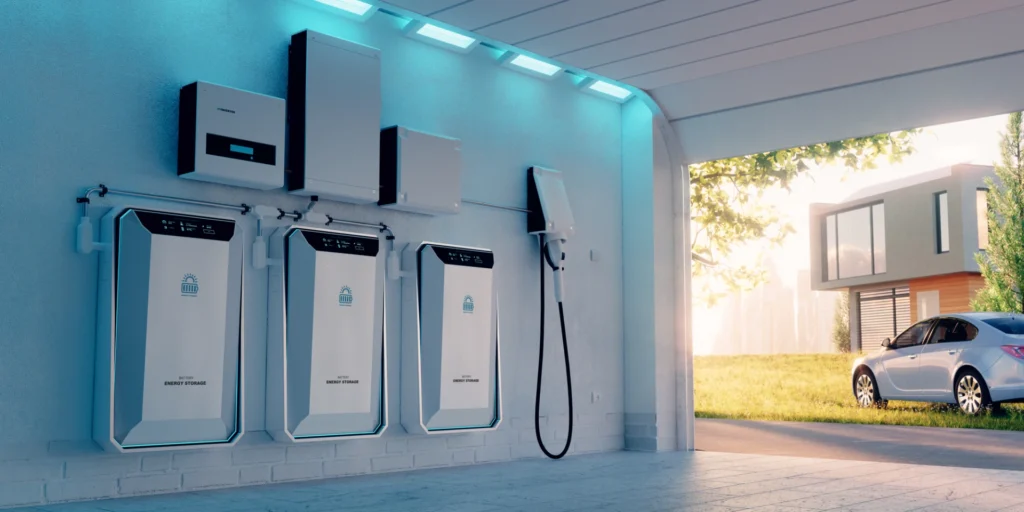
Residential solar systems have become popular as more homeowners seek to reduce their dependence on traditional power sources. The use of solar energy not only provides an eco-friendly way to power homes and offers a sense of independence from the grid, allowing homeowners to generate their electricity. However, the effectiveness and longevity of these systems rely heavily on the lifespan of the batteries used to store excess energy generated during peak sunlight hours.
This article will explore the expected lifespan of batteries used in residential solar systems. We will examine various commonly used battery types, such as lead-acid, lithium-ion, and flow batteries, and provide insights into factors that can impact battery lifespan. Additionally, we will offer tips for maximizing battery life and discuss how to approach battery replacement when necessary. By understanding the expected lifespan of batteries in residential solar systems and taking steps to extend their longevity, homeowners can ensure their investment in renewable energy is both cost-effective and sustainable over time.
Residential solar systems have gained popularity in recent years as a sustainable and cost-efficient alternative to traditional energy sources. These systems consist of photovoltaic (PV) panels that capture the sun’s energy and convert it into electrical power for home use. The installation involves mounting the panels on rooftops or open areas with sufficient sunlight exposure, connecting them to an inverter that converts direct current (DC) electricity from the panels to alternating current (AC), and finally, connecting the system to the home’s electrical grid.
The cost comparison is one of the primary reasons many households choose residential solar systems. While initial costs may be high due to purchasing PV panels and installing them, homeowners can save money over time by generating their electricity instead of relying solely on grid power. In addition, federal tax credits and incentives are available to further decrease upfront costs. Furthermore, some states offer net metering programs where homeowners can receive credit on their utility bills for excess energy produced by their solar system.
The installation typically takes several days or weeks depending on factors such as roof type, size of solar array desired, and local regulations. Prior site inspections are usually required before installation begins to ensure that no shading issues exist that could impact performance significantly. Once installed, there is little maintenance required beyond periodic cleaning of PV panels.
Residential solar systems offer significant benefits compared to traditional energy sources in terms of cost savings and sustainability. Although they require an initial investment upfront, homeowners can recover those costs through lower utility bills while reducing their carbon footprint. Additionally, with advancements in technology making solar panel manufacturing more efficient than ever combined with simplified installation processes – more households may soon embrace this green alternative as a way towards freedom from conventional power grids!
Various energy storage technologies are commonly used in solar power setups for households. The type of battery used can significantly impact the performance and lifespan of the system. The three most common types of batteries used in residential solar systems are lead-acid, lithium-ion, and flow batteries.
Lead-acid batteries have been popular for decades due to their low cost and reliability. However, they require regular maintenance, such as adding distilled water to prevent corrosion and checking the electrolyte level. These batteries also have a limited capacity and lower efficiency than newer technologies.
Lithium-ion batteries have gained popularity in recent years due to their higher efficiency, longer lifespan, and ability to discharge deeper without damaging the battery. They are also maintenance-free and offer greater flexibility in terms of installation location. However, lithium-ion batteries come at a higher cost than lead-acid options.
Flow batteries store energy in liquid electrolytes that flow through cells separated by membranes. They have a long lifespan and high capacity potential but are still a relatively new technology with limited availability on the market. Flow batteries can be more expensive than other options but may be worth considering for those prioritizing longevity over initial cost.
Choosing the right battery for a residential solar system depends on individual needs and priorities, such as budget constraints or environmental concerns. Proper battery maintenance is crucial regardless of which type is chosen to ensure optimal performance and longevity of the system.
Lead-acid batteries have been a popular choice for decades due to their low cost and reliability, but it is important to note that their performance deteriorates over time. The expected lifespan of lead-acid batteries used in residential solar systems varies depending on several factors, such as usage, maintenance, and environmental conditions. On average, these batteries can last anywhere from 3-7 years before requiring replacement.
Maintenance is one of the most significant factors affecting the lifespan of lead-acid batteries. Proper maintenance helps extend the battery’s life by preventing common failures such as sulfation and corrosion. Sulfation occurs when sulfuric acid builds up on the battery’s plates, reducing its charge capacity. Corrosion happens when water and acid mix, leading to rust and damaging the battery terminals.
Regular lead acid battery maintenance is crucial to prevent sulfation and corrosion. This includes checking the water levels in each cell regularly and adding distilled water when necessary. It also involves keeping the surface of each cell clean and free from any dirt or debris that might interfere with charging or discharging processes.
While lead-acid batteries remain popular for residential solar systems because of their low cost and reliability, their performance deteriorates over time. Their expected lifespan depends on various factors such as usage patterns and environmental conditions like temperature fluctuations or humidity levels within your home environment; however, proper maintenance habits can help increase longevity significantly by preventing common failures like sulfation or corrosion, which ultimately reduces both efficiency & overall life expectancy over extended periods without intervention!
Lithium-ion batteries are gaining popularity as a reliable and efficient energy storage solution for commercial and personal use. These batteries have undergone significant technological advancements, resulting in higher energy density, longer cycle life, and improved safety features. Lithium-ion batteries offer superior performance characteristics well-suited for renewable energy applications compared to other battery types, such as lead-acid or nickel-cadmium.
One of the key advantages of lithium-ion batteries is their longer lifespan compared to other battery types. On average, a lithium-ion battery can last between 5-15 years, depending on the manufacturer’s specifications and usage patterns. This lifespan is significantly higher than lead-acid batteries, which typically last 3-7 years under similar conditions. Lithium-ion batteries have a much higher cycle life, allowing them to be charged and discharged thousands of times without significant degradation in performance.
Another advantage of lithium-ion batteries is their high energy density which refers to the amount of energy that can be stored per unit volume or weight. Lithium-ion batteries have one of the highest energy densities among commercially available rechargeable battery technologies, which means they can store more energy in less space than other battery types. This makes them an ideal choice for applications where space is limited, such as residential solar systems.
Lithium-ion battery technology advancements have made these batteries a preferred choice for renewable energy storage solutions due to their longer lifespan and superior performance over other battery types like lead-acid or nickel-cadmium. With continued research and development efforts focused on improving their efficiency and reducing costs, it is expected that these batteries will continue to play a vital role in meeting our future clean energy needs while providing individuals with greater freedom from traditional fossil fuel-based sources of power generation.
Flow batteries have shown promise as a potential energy storage solution that can provide extended discharge times and scalable capacity. Flow battery technology advancements offer many advantages in terms of longer lifespan, higher efficiency, and better performance than traditional battery chemistries. The expected lifespan of flow batteries is estimated to be between 10-20 years, depending on usage patterns.
One significant advantage of flow batteries over other battery types is their scalability. This means that they can easily be expanded or reduced based on the needs of a particular application or energy demand. Flow batteries store energy in two liquid electrolytes separated by a membrane. Electrons are exchanged as these electrolytes flow past each other through the membrane during charging and discharging cycles, creating an electrical current.
Another advantage of using flow batteries is their high cycle life; this refers to the number of times that a battery can be charged and discharged before it begins to degrade. Traditional lithium-ion batteries typically have around 1,000 cycles over their lifetime, while some newer models may reach up to 5,000 cycles. Flow batteries can last for up to 10,000-20,000 cycles with proper maintenance.
Overall, while traditional battery technologies continue to improve capacity and performance metrics, such as cycle life and charging speed, flow battery technology advancements offer several advantages that make them an attractive option for energy storage solutions in residential solar systems and beyond. As more research continues into this innovative technology area, there will likely be even further breakthroughs pushing forward its capabilities, making it even more attractive for homeowners looking for reliable renewable energy storage options with longer lifespans than traditional chemical-based alternatives could ever hope to provide at present-day technological levels achieved so far.
Several factors impact the lifespan of batteries in a residential solar system. These include temperature, depth of discharge, charging cycles, and battery maintenance practices. Environmental factors such as humidity and air quality can also have an effect.
Environmental factors like humidity levels and air quality also play a role in determining battery life expectancy in residential solar systems. Humidity can cause corrosion or rusting on the exterior casing or internal parts of a battery which could damage it over time, while poor air quality could lead to clogged cooling fans that eventually lead to overheating, which would shorten the life span of any electronic device including batteries used in residential solar systems.
Several factors impact battery performance in residential solar systems, including temperature fluctuations, depth of discharge during regular use cycles as well as proper maintenance practices like cleaning regularly or checking electrical connections periodically for loose wires, etc., all help prolong expected lifespans for these devices even further than expected under normal circumstances if maintained properly by homeowners themselves or professionals hired to manage regular check-ups on these devices overtime thus allowing users greater freedom from worry about system failures due premature breakdowns caused by neglecting proper care procedures necessary for optimal operations when using renewable energy sources like solar power.
To ensure the longevity of energy storage devices, implementing proper maintenance and monitoring practices can significantly improve their performance and reduce the risk of unexpected failures. Regarding residential solar systems, batteries are an essential component that requires regular upkeep to maintain efficiency. One of the common mistakes people make is neglecting battery maintenance, assuming that they will function optimally without any intervention. However, this approach can lead to a shorter battery lifespan and reduced energy output.
One way to maximize battery lifespan is by performing routine checks on their condition and charge levels. This enables homeowners to identify any issues early on and address them before they escalate into more significant problems. Keeping the batteries clean from dust or debris buildup can also help prevent corrosion or damage to internal components. It is also crucial to avoid overcharging or discharging the batteries beyond recommended levels since this can cause irreversible damage.
Another effective strategy for maximizing battery lifespan is investing in high-quality equipment and professional installation services. Poor quality components or improper installation practices can accelerate battery wear and tear, leading to premature failure. Therefore, working with reputable vendors who offer warranties on their products and services can provide peace of mind while ensuring optimal performance.
Maintaining residential solar system batteries requires a proactive approach by implementing routine checks and utilizing proper maintenance practices. Common mistakes such as neglecting battery upkeep or using poor quality equipment could significantly impact battery lifespan. Homeowners should aim for professional installations from reputable vendors that provide warranties on products and services while avoiding overcharging or discharging beyond recommended levels. By doing so, homeowners can maximize energy output while extending the life of their residential solar system’s batteries.
Battery replacement is an inevitable aspect of using a residential solar system with batteries. Signs that a battery needs to be replaced include reduced capacity, longer charging times, and frequent discharging. Recycling old batteries is crucial in minimizing environmental impact, as they contain toxic chemicals and heavy metals that can harm the environment if not disposed of properly. Proper disposal methods for old batteries include taking them to recycling centers or hazardous waste facilities.
Indicators of battery deterioration include a gradual decrease in energy storage capacity, longer charging times, and increased internal resistance. As batteries age, they lose their ability to hold a charge and may require more time to recharge fully. This is especially true for lead-acid batteries commonly used in residential solar systems. In addition to reduced capacity and longer charging times, an increase in internal resistance can signal that it is time for a battery replacement. Internal resistance refers to the energy lost as heat when electricity flows through the battery. If this value increases significantly over time, it can indicate that the battery has reached the end of its useful life.
To prevent premature battery failure, regular maintenance techniques should be employed. These include checking voltage levels regularly, keeping the battery clean and dry, and ensuring proper ventilation around the system components. Additionally, avoiding deep discharges or overcharging can help prolong the lifespan of residential solar system batteries. Replacing older batteries before they reach complete failure is recommended, as this will reduce downtime and minimize potential damage to other components within the system. By monitoring warning signs of battery deterioration closely and implementing proper maintenance techniques, homeowners can ensure their residential solar systems continue operating efficiently for years.
Sustainable disposal practices for used battery cells have become increasingly important as the demand for renewable energy solutions continues to rise. As residential solar systems become more popular, it is crucial to consider the environmental impact of disposing of old batteries. Batteries contain toxic chemicals such as lead and cadmium, which can harm the environment if not disposed of properly. Here are some ways to recycle old batteries:
Battery disposal should be taken seriously when considering residential solar systems. Properly disposing of old batteries through recycling programs helps reduce environmental impact and ensures valuable resources are reused in production processes instead of ending up in landfills or polluting our waterways.
Residential solar systems have become popular in recent years as people look for ways to reduce their carbon footprint and save money on energy bills. These systems rely on batteries to store excess energy generated during the day for use at night or during cloudy days. Several types of batteries are used in residential solar systems, including lead-acid, lithium-ion, and flow batteries.
The expected lifespan of a battery in a residential solar system depends on various factors such as the type of battery, usage pattern, maintenance practices, and environmental conditions. Lead-acid batteries are the most commonly used type of battery in these systems and can last up to 5-10 years with proper care. Lithium-ion batteries have a longer lifespan of around 10-15 years but are more expensive than lead-acid batteries. Flow batteries have an even longer lifespan of up to 20 years but are not widely used due to their high cost.
To maximize the lifespan of a battery in a residential solar system, it is essential to follow best practices such as avoiding overcharging or completely discharging the battery, ensuring proper ventilation and temperature control, and performing regular maintenance checks. It is also crucial to consider factors like location-specific weather patterns when choosing a battery for your system.
In conclusion, understanding the expected lifespan of different types of batteries used in residential solar systems is critical for making informed decisions about purchasing and maintaining these systems. By following best practices and considering all relevant factors when selecting batteries for your system, you can ensure that they perform optimally throughout their expected lifespans while helping you achieve your renewable energy goals.
The battery replacement cost in a residential solar system varies depending on the type and size of batteries used. Maintenance expenses may also impact the overall cost of battery replacement over the system’s lifespan.
Battery maintenance and temperature regulation are critical factors that impact the lifespan of batteries in a residential solar system. Extreme temperatures can accelerate battery degradation, reducing efficiency and overall performance. Therefore, proper temperature regulation and regular maintenance are vital for extending battery life.
Tax incentives and rebates are available for residential solar battery replacements. These programs aim to encourage electricity savings and promote environmental benefits. Technical data shows that replacing aging batteries can significantly improve solar system efficiency, offering greater energy independence.
Effective battery disposal methods are essential to mitigate the environmental impact of discarded batteries from residential solar systems. Proper recycling processes can reduce waste and prevent toxic substances from entering the soil, water, and air.
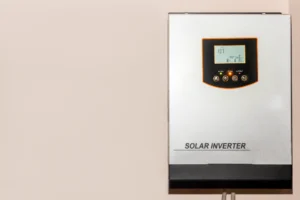
Difference Between String And Microinverters In A Solar Panel System? Share: Facebook Twitter LinkedIn Pinterest The world is gradually shifting towards renewable energy sources, with
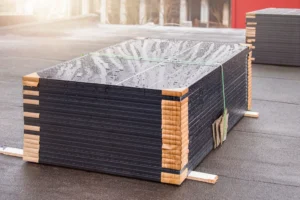
How Do I Choose The Right Solar Panel Manufacturer? Share: Facebook Twitter LinkedIn Pinterest As the world becomes more environmentally conscious, many individuals are turning
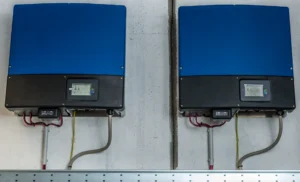
How Do I Choose The Right Inverter For My Solar Panels System? Share: Facebook Twitter LinkedIn Pinterest Choosing the right inverter for your solar panel
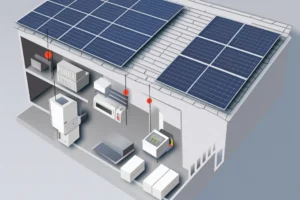
What Kind Of Backup Power Options Are Available With A Solar Panel System? Share: Facebook Twitter LinkedIn Pinterest Solar panel systems have become increasingly popular
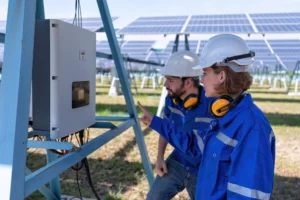
What Is The Expected Lifespan Of A Solar Inverter? Share: Facebook Twitter LinkedIn Pinterest Solar energy is becoming increasingly popular as a source of renewable
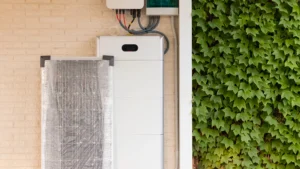
Understanding The Main Components Of A Solar Panel System Share: Facebook Twitter LinkedIn Pinterest As concerns about climate change and the environment continue to rise,